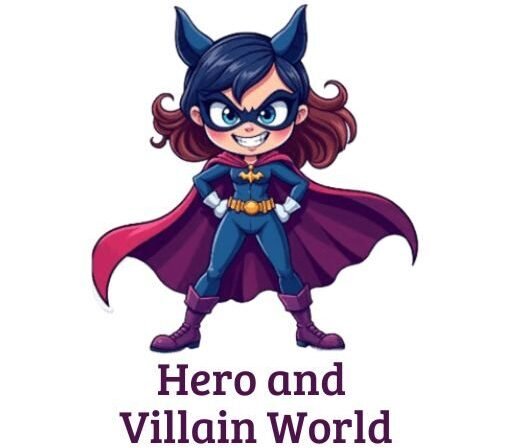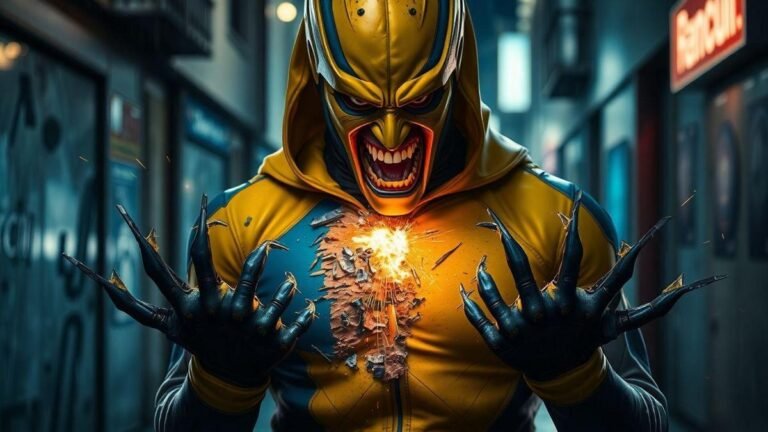DC’s Tangent Comics: A Universe of Reimagined Heroes with a Single Shared Name
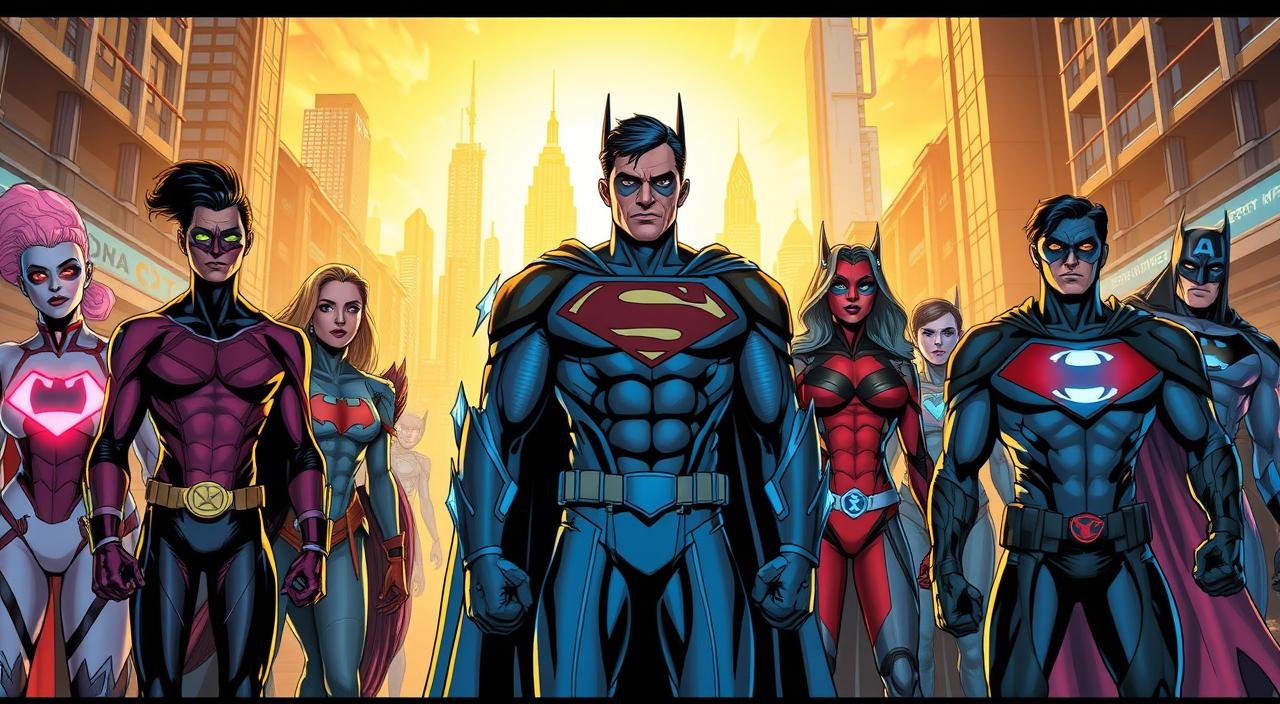
I still remember the thrill of discovering a comic book that didn’t play by the rules. It was 1998, and I stumbled upon a series where Superman wasn’t an alien orphan and Batman didn’t brood in Gotham’s shadows.
Instead, these heroes wore familiar names like armor—but their stories? They soared in directions I’d never imagined.
This was my first encounter with a daring experiment called Tangent Comics. Launched in 1997, it tossed out decades of lore to ask: What if iconic names became blank canvases? A detective named Joker.
A cosmic entity called Green Lantern. Each issue felt like opening a door to infinite possibilities.
What hooked me wasn’t just the fresh takes—it was the shared identity threading through this world. Every character carried a legacy title, yet their origins and powers defied expectations.
That single creative choice transformed familiar labels into sparks of curiosity. Suddenly, “The Flash” could mean anything from a time traveler to a living storm.
Looking back, this universe’s brief existence reminds me why storytelling matters. By breaking traditions while honoring names we trust, it invited us to reimagine what heroes could be. And isn’t that the most heroic act of all?
Introduction to DC’s Tangent Comics Universe
Imagine a world where historical events took sharp turns, birthing heroes unlike any we’d known. That’s Earth-9—a reality where the Cuban Missile Crisis didn’t end with tense negotiations.
Instead, it exploded into a conflict that rewired global politics and unleashed superhuman forces. This became the foundation of the Tangent Comics imprint, where familiar titles like “Green Lantern” or “The Flash” became keys to entirely new mythologies.
What struck me most was how this world blended sleek futurism with raw, urban edges. Cities gleamed with holographic ads, but alleyways hid augmented mercenaries.
Life here felt both advanced and fragile, like society balanced on a knife’s edge. Heroes weren’t just born from tragedy—they emerged from nuclear fallout, rogue AI, and wars that reshaped continents.
Super-powered individuals didn’t just alter battles—they bent time and technology. A scientist might discover alien DNA in their bloodstream, while a soldier could merge with sentient machinery.
Every twist made me question: “What defines a hero’s legacy when their origin is unrecognizable?”
DC’s boldest move was treating iconic names as empty vessels. By divorcing titles from their mainstream roots, they created a playground for reinvention.
This approach didn’t just challenge readers—it invited us to see storytelling as a living, evolving art form. And that’s where Earth-9 truly shines: in its refusal to let history dictate destiny.
The Genesis of the Tangent Comics Imprint
What does it take to rebuild legends from the ground up? In the late 1990s, a bold origin story began taking shape behind closed doors.
Writers and artists gathered, armed with one rule: Treat iconic names as empty vessels waiting to be filled with entirely new meanings.
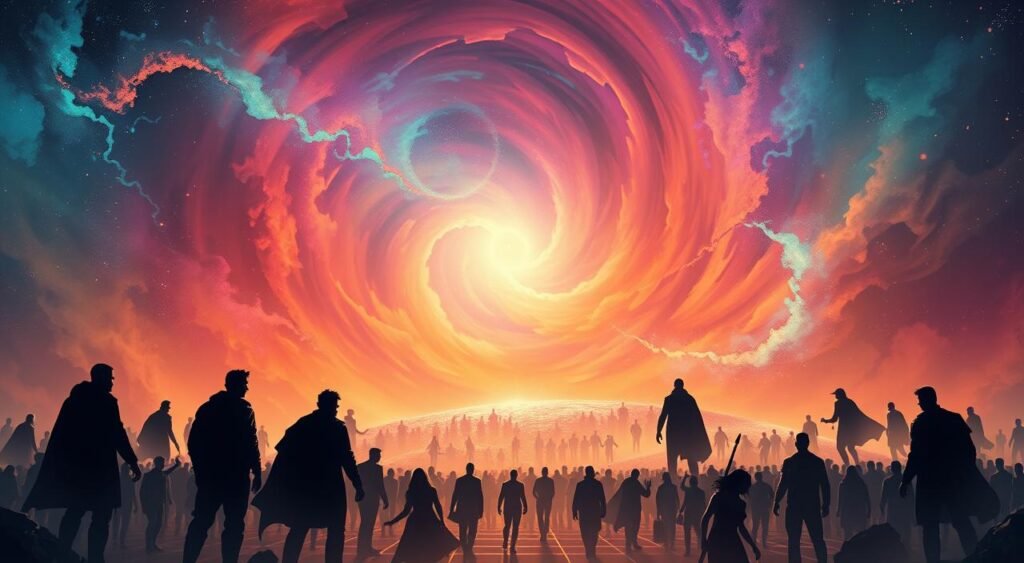
Early Creative Concepts and Inspirations
Dan Jurgens, the architect of this experiment, once described it as “writing with handcuffs off.” The team drew from Cold War anxieties, cyberpunk aesthetics, and quantum theory.
Instead of recycling old tropes, they asked: What if “Joker” wasn’t a villain but a detective? Could “Plastic Man” exist as a mental projection?
“We wanted readers to feel that thrill of discovery—like they’d found a parallel universe in their local comic shop.”
Publication History and Editorial Vision
1997-1998 became pivotal years. Each issue launched with a #1, signaling fresh starts. Editors prioritized standalone stories over crossovers, letting characters breathe in their own realities. The table below shows how key titles redefined expectations:
| Title | Core Concept | Cultural Influence |
|---|---|---|
| Green Lantern | Occult detective | 1990s grunge mysticism |
| The Flash | Living light entity | Quantum physics boom |
| Metal Men | Cold War spies | Post-Soviet tensions |
This approach created a paradox—familiarity bred surprise. By honoring names while discarding baggage, they crafted an origin point that still echoes in modern storytelling.
dc tangent comics reimagined: A Fresh Take on Legacy Characters
What if hero names were keys to entirely different locks? That’s the question that hooked me when exploring this bold reinterpretation. By stripping iconic labels from their traditional roots, creators forged characters that felt both comfortingly familiar and thrillingly alien.
Breaking Away from Traditional Narratives
Take Plastic Man—no stretchy limbs here. Instead, he projected mental illusions through sheer willpower.
This twist on powers rewired everything I thought I knew about the character. Even their appearance defied expectations: sleek bodysuits replaced capes, and gadgets looked like artifacts from alternate dimensions.
Some abilities blurred into magic. One hero manipulated light particles like ancient incantations, while another channeled energy through arcane symbols tattooed on their skin.
These weren’t just updates—they were reinventions that made me question why we ever accepted the originals as “definitive.”
What excites me most? How these names became launchpads for wild creativity. By freeing titles from their baggage, storytellers proved that legacy isn’t about repeating history—it’s about writing new chapters with the same bold letters.
Tangent Doom Patrol: Heroes From the Future
Time travelers don’t always wear watches. When I first met this version of the Doom Patrol, they weren’t misfits—they were chrono-crusaders. Their mission? To rewrite tomorrow before it becomes yesterday.
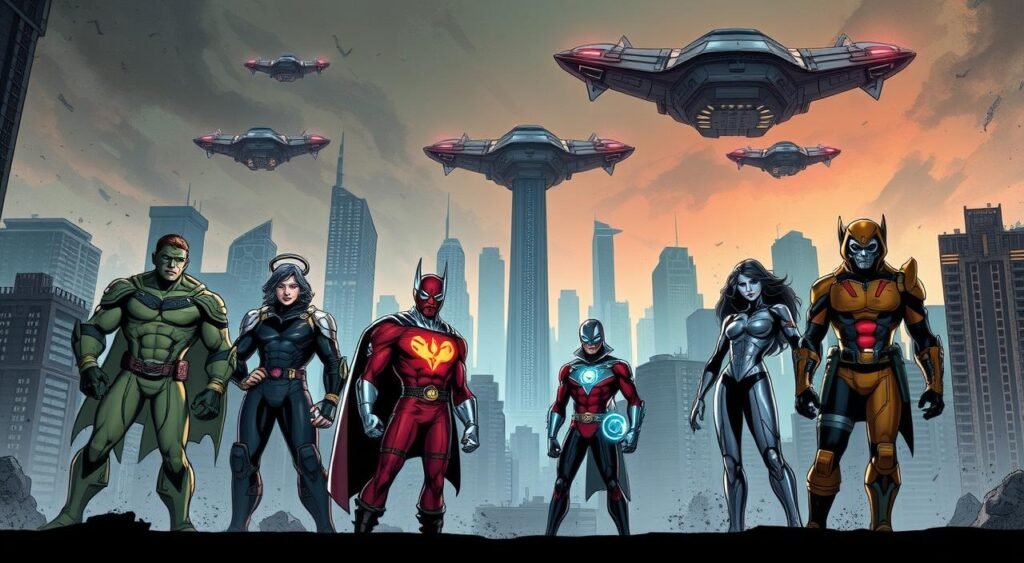
Doctor Diedre Dey’s Leadership and Prophecies
Dr. Dey didn’t just lead—she saw. Her visions of collapsing timelines gave the team purpose. In one story, she warned of a “silent apocalypse” caused by rogue nanobots in 2145. But here’s the twist: her prophecies changed whenever they altered events. Talk about pressure!
“Fate isn’t written—it’s edited. Our job is to be the red pen.”
Team Dynamics and Timely Challenges
This wasn’t your average superhero squad. Members included:
| Member | Role | Conflict |
|---|---|---|
| Chronos | Time-jumping strategist | Addicted to temporal shifts |
| Vortex | Gravity manipulator | Slowly dissolving into dark matter |
| Echo | Sound-based hacker | Trapped between time zones |
Their greatest challenge? Every victory created new paradoxes. Saving a city might erase a teammate from existence. Yet they kept fighting—because someone had to hold the future together.
What makes this Doom Patrol special isn’t their powers. It’s their tragic awareness that every choice has infinite consequences. That’s heroism with a stopwatch ticking in your chest.
Tangent Metal Men: Covert Ops and Cold War Tensions
Espionage stories often hide in plain sight. When I first encountered this version of the Metal Men, they weren’t robots—they were black-ops specialists.
Their new role? Operating in a world where the Soviet Union never fell, and global tensions simmered like a powder keg.
Soviet Influences and Military Recasting
Gone were the colorful alloy bodies. Instead, the group wore tactical gear stained with mud and blood.
Their missions blurred lines between heroism and espionage—sabotaging weapons labs, extracting defectors, and destabilizing regimes. Every panel dripped with 1990s-era anxiety about nuclear brinkmanship.
What shocked me was how their powers evolved. Mercury could infiltrate systems as liquid data. Lead absorbed radiation to shield allies.
Each ability served battlefield pragmatism over flashy heroics. Even their code names felt like military call signs rather than playful nicknames.
Redefining Iconic Characters with a Gritty Twist
The storytelling here thrived on moral ambiguity. One issue showed them rigging an election to prevent war—then wrestling with the fallout. Another revealed a member betraying the team for family trapped behind the Iron Curtain.
“Loyalty’s a bullet with your name etched on it.”
This approach transformed the Metal Men into something raw and urgent. By grounding them in real-world fears, creators proved that even familiar characters could mirror our darkest historical what-ifs. That’s the power of a name stripped bare—then reforged in fire.
The Sea Devils: Born from Nuclear Havoc
The ocean floor hides more than shipwrecks and lost cities. When radioactive waves swallowed the American southeast, they birthed something far stranger—a legion of creatures that redefined marine horror.
I still get chills thinking about my first encounter with these rulers of the irradiated deep.
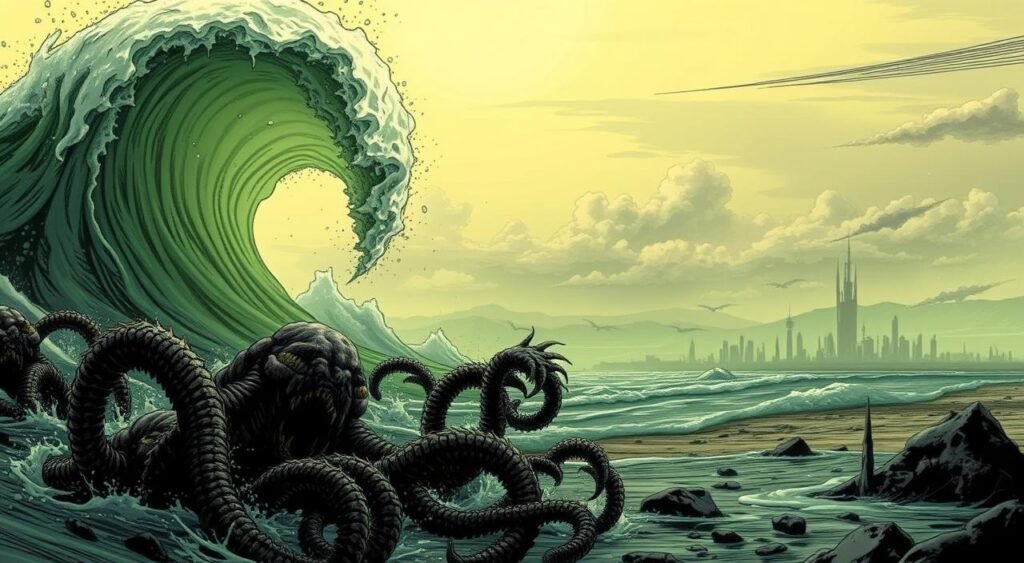
Emerging from Catastrophic Fallout
It began with a chain reaction. A single misfired missile during the Cuban Crisis triggered a cataclysm that turned coastlines into graveyards.
Years later, ordinary marine life started changing. Jellyfish grew skeletal fingers. Sharks developed humanoid torsos. The sea devils weren’t just mutations—they were evolution on fast-forward.
Their fortress? The crumbling spires of city New Atlantis, once a bustling port now reclaimed by toxic tides.
I marveled at how these beings transformed rusted skyscrapers into hunting grounds. Their society thrived in the end of human dominance, turning our ruins into their throne room.
What fascinates me most isn’t their grotesque appearance. It’s how nuclear devastation became their genesis.
Comics often use environmental disasters as plot devices, but here, radiation wasn’t just a threat—it was a creator. The sea devils remind us that nature adapts in terrifying ways when pushed to extremes.
Their story makes me wonder: Could our worst mistakes birth someone else’s golden age? In this drowned world, the creatures we feared became the kings we deserved.
Reinventing The Spectre: High-Tech and Haunted
Ghost stories don’t usually involve circuit boards. But Taylor Pike’s version of The Spectre changed everything I thought about phantom heroes. After a lab accident flooded his body with experimental energy, Pike gained the power to phase through walls—and his own criminal past.
Taylor Pike’s Modern Take and Transformation
This wasn’t your grandfather’s spirit of vengeance. Pike’s abilities manifested as neon-lit energy patterns rather than ghostly vapors.
His “haunting” involved hacking security systems by walking through firewalls. The table below shows how this interpretation flipped tradition:
| Aspect | Traditional Spectre | Tangent Version |
|---|---|---|
| Origin | Divine wrath | Quantum accident |
| Powers | Soul manipulation | Data intangibility |
| Motivation | Cosmic justice | Personal redemption |
The Secret Six and Their Role in His Redemption
Enter the Secret Six—a covert team specializing in rehabilitating super-powered criminals. They didn’t preach morality.
Instead, they showed Pike how his tech-enhanced phasing could disable weapons of mass destruction. One mission had him infiltrating a missile silo by merging with its launch codes.
“We don’t erase sins. We overwrite them with better code.”
What makes this Secret Six partnership compelling? They treated Pike’s condition as an engineering challenge rather than a curse.
His ability to filter light through quantum fields became a tool for disarming bombs instead of cracking safes.
By the series’ end, the man who once ghosted through bank vaults was walking through solid steel to rescue hostages.
This reinvention proves that redemption arcs work best when they’re not about erasing the past—but reprogramming the future.
Tangent Manhunter: A Vengeance-Driven Icon
What makes a hero cross the line into obsession? Earth-9’s Manhunter answers with steel claws and a growling cyber-hound. This isn’t a detective solving crimes—it’s a man rewriting justice as personal vengeance.
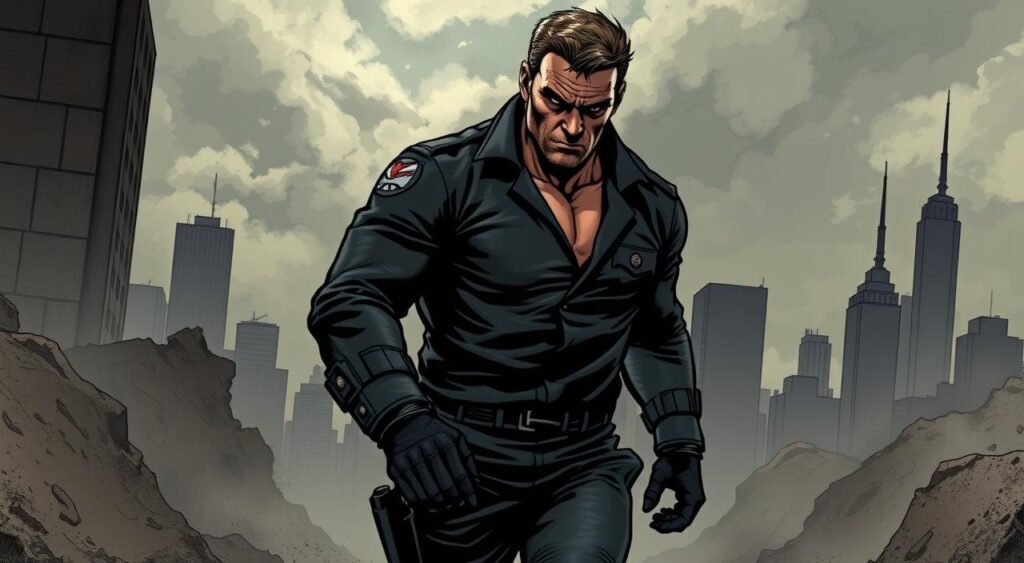
Cybernetic Companions and a Quest for Justice
His origin story burned through me. A former soldier’s family killed by corrupt officials. Instead of due process, he fused with military-grade implants and adopted K-9—a canine companion with plasma fangs.
Their mission? Hunt every conspirator, leaving broken bones instead of arrest warrants.
The table below shows how this version flips traditional traits:
| Aspect | Classic Manhunter | Earth-9 Version |
|---|---|---|
| Motivation | Uphold law | Personal vendetta |
| Methods | Investigation | Brutal retaliation |
| Companion | Human partner | Cybernetic hound |
K-9’s role fascinated me most. The hound didn’t just track targets—it archived their digital footprints and predicted escape routes.
One issue showed it disarming bombs by chewing through wires while its master broke jaws upstairs.
“Justice bends. Revenge breaks.”
This narrative’s darkness reshaped how I view heroic characters. By tying his crusade to raw loss rather than idealism, Earth-9’s Manhunter becomes a mirror for our thirst for closure.
Sometimes, the most compelling heroes are those who terrify us with their humanity.
Reimagining Wonder Woman: Exiled and Empowered
Heroes often wear their origins like armor—but Earth-9’s Wonder Woman carries hers like chains. This warrior wasn’t shaped by clay or Amazonian ideals.
She arrived as a refugee, her homeworld’s endless wars scorched into her DNA. What gripped me wasn’t just her alien roots—it was how her trauma birthed unimaginable power.
Alien Origins and Reality-Altering Powers
Her story begins light-years away. On a planet where conflict consumed civilizations, she developed abilities to bend reality itself.
Exiled for refusing to weaponize her gifts, she became Earth’s reluctant guardian. Unlike her traditional counterpart’s lasso and bracelets, her tools were raw thought—capable of rewriting physics or erasing cities with a blink.
The table below shows how this version flips expectations:
| Aspect | Classic Wonder Woman | Earth-9 Version |
|---|---|---|
| Origin | Mythical paradise | War-torn alien world |
| Motivation | Diplomatic peace | Survival through control |
| Greatest Power | Superhuman strength | Reality manipulation |
Isolation defines her journey. One issue showed her accidentally altering a friend into stardust—then spending months rebuilding their atomic structure. Another revealed her creating pocket dimensions just to scream without consequences.
“Power isn’t a crown—it’s a cage with the keys melted down.”
What awes me most? How this woman transforms vulnerability into strength. By grounding cosmic abilities in human-scale struggles, creators crafted a hero who feels both godlike and heartbreakingly real.
That’s the magic of reinvention—when familiar names become mirrors reflecting our deepest fears and hopes.
The Versatile Plastic Man: Stretching the Limits of Power
What if stretching your body was just the warm-up act? When I met Earth-9’s Plastic Man, his powers defied every elastic hero trope I knew. This version didn’t just bend—he projected consciousness into objects, turning cityscapes into extensions of his mind.
Mind Projection and Unconventional Abilities
Traditional shape-shifting felt quaint compared to his skills. In one issue, he imprinted his thoughts onto a crumbling bridge to steer fleeing civilians.
The catch? Every projection risked fragmenting his psyche. I still recall a panel where his reflection split into seven arguing versions—each representing lost memories.
His capabilities reshaped team dynamics with the Secret Six. While others fought physically, Plastic Man became their living surveillance network. He could:
- Haunt security cameras as digital static
- Manipulate machinery through touchless interface
- Leave mental “traps” in enemy strongholds
| Aspect | Classic Version | Earth-9 Innovation |
|---|---|---|
| Core Power | Body elasticity | Consciousness transfer |
| Weakness | Extreme cold | Identity dissolution |
| Role | Comic relief | Covert strategist |
“We wanted to explore the horror of losing yourself in your own gift.”
This take challenged me to rethink superpower storytelling. By merging mental strain with meta-human abilities, creators turned Plastic Man into a walking existential crisis—and proved even silly concepts can carry profound weight.
The Flash Reimagined: A Brilliance of Light
Speedsters usually leave trails of lightning—not stardust. Lia Nelson changed everything I thought about velocity when I discovered her story.
Born in deep space during humanity’s first interstellar colony mission, she absorbed cosmic radiation that fused her DNA with pure light. This twist made her Earth-9’s fastest hero—and its most creative.
Lia Nelson’s Journey and Light-Based Powers
Her powers shattered speedster stereotypes. While traditional Flashes manipulate kinetic energy, Lia bends photons. She doesn’t just run—she becomes light.
One issue showed her dissolving into a beam to cross continents, then reforming as a holographic decoy to confuse enemies.
What truly amazed me? Her ability to craft solid light constructs. Bridges, weapons, even temporary allies—all formed from concentrated photons. The table below reveals how this version redefines speed:
| Aspect | Classic Flash | Lia Nelson |
|---|---|---|
| Origin | Chemical accident | Cosmic birth |
| Speed Mechanism | Speed Force | Photon conversion |
| Signature Ability | Time travel | Holographic engineering |
Time plays a cruel role in her story. Moving at light-speed ages her body abnormally—each burst of velocity steals months from her lifespan.
Yet she keeps racing, determined to outpace her mortality. This tragic edge makes her heroism feel urgent, like a star burning brightest before collapse.
As a longtime Flash fan, I’m thrilled by how Lia’s light-based skills expand what “speed” means. She proves velocity isn’t just about movement—it’s about illuminating new possibilities.
Green Lantern’s Occult Odyssey: Mysticism and Magic
Some heroes carry weapons—others wield mysteries. When I first encountered this version of Green Lantern, her power didn’t come from alien tech or cosmic will. It flowed from a rusted lamp that whispered secrets of the dead.
This occult detective redefined what a “lantern” could mean, trading space opera for séances and blood rituals.
Exploring Dark Rituals and the Power of the Lamp
Her lamp didn’t just emit light—it consumed it. I watched her bargain with spirits, using their whispers to solve crimes.
One story showed her reviving a murder victim for three questions, their decaying lips forming answers in real time. The cost? A drop of her blood per word spoken.
This Green Lantern operated in shadows, her methods blurring heroism and heresy. Her toolkit included:
- Runic tattoos that glowed during rituals
- A network of ghostly informants
- Bone dust as a truth serum
| Aspect | Traditional Lantern | Occult Version |
|---|---|---|
| Power Source | Ring battery | Necromantic lamp |
| Weakness | Yellow energy | Broken oaths |
| Allies | Space corps | Restless souls |
Cross-Over Intrigues with Mainstream Heroes
Her strangest case? Teaming with Justice League members to stop a cult resurrecting ancient gods. Batman analyzed ritual symbols while she channeled dead prophets.
The clash of styles created sparks—like when Superman’s heat vision powered her lamp during a midnight exorcism.
“Your science is just slow magic.”
This crossover proved even Justice League stalwarts could thrive in occult chaos. By weaving magic into superhero teamwork, creators showed how different flavors of power could blend into something unforgettable. That’s the real sorcery—making the impossible feel inevitable.
Nightwing’s Transformation: Surveillance, Strategy, and Secrets
Legends aren’t born—they’re engineered in the shadows. When I discovered Earth-9’s version of Nightwing, it wasn’t a solo hero swinging between rooftops.
It was a collective operating like clockwork behind steel doors and encrypted feeds. Their role? To become the unseen hand guiding superhuman affairs.
A Clandestine Collective Evolving Into a Watchful Force
This iteration transformed Nightwing from a name into a system. Imagine King Arthur’s round table fused with a modern intelligence agency.
Members adopted code names like “Pendragon” and “Gawain,” blending Arthurian symbolism with cutting-edge tech. Their base? A hidden bunker beneath Stonehenge’s ancient stones.
What hooked me was their method. Instead of fighting villains directly, they manipulated events through data leaks and strategic alliances.
One story showed them leaking a warlord’s plans to his rivals—sparking a conflict that resolved itself. Another revealed their state-backed authority to quarantine dangerous metahumans.
“We’re not knights. We’re the table they meet at.”
The King Arthur parallels deepened their mythology. Leaders rotated like monarchs, each inheriting the “Nightwing” title after proving their strategic brilliance. Their hierarchy mirrored Camelot’s court, with analysts as scribes and field agents as knights.
Even their failures carried weight—one fallen member’s sacrifice became a rallying cry etched into their codebase.
This blend of ancient myth and modern surveillance thrilled me. By reimagining heroism as calculated influence, Nightwing’s legacy became something far more intriguing—a reminder that sometimes, the most powerful heroes are the ones you never see.
Tangent Universe: Politics, Warfare, and Redemption
Conflict shapes heroes differently than cosmic accidents or personal tragedies. In this world, bulletproof ideals meet realpolitik. Superpowered diplomacy determines which city burns and which survives.
The Impact of Global Events on Superhero Narratives
I watched the tangent green lantern broker peace between warring nations using occult rituals instead of force.
Her lamp became a bargaining chip—ghostly whispers replaced sanctions. Meanwhile, the justice league evolved into crisis mediators, deploying heroes as living deterrents.
Urban battlegrounds reveal the cost. New earth cities rebuilt with force fields after nuclear strikes now resemble fractured mosaics.
Skyscrapers lean against energy domes, markets thrive in bomb craters. The table below shows how war reshaped key locations:
| Location | Pre-War | Post-War |
|---|---|---|
| Metropolis | Tech hub | Floating refugee camps |
| Gotham Harbor | Shipping center | Mutant coral reefs |
| Central City | Solar farms | Photon minefields |
Individual heroes bear invisible scars. One justice league member confessed: “Saving a world means choosing who to abandon.” The tangent green lantern’s alliance with warlords still haunts her—necessary evils leave moral limps.
What defines heroism here? Not capes or catchphrases, but the grit to navigate grayer-than-gray choices. When new earth diplomats demanded superhuman conscription, heroes became both weapons and peace symbols.
That tension—between duty and conscience—fuels Earth-9’s most gripping tales.
“We’re not symbols anymore. We’re the scalpel and the suture.”
Walking through irradiated city streets last issue, I realized something profound. In this world, redemption isn’t about wiping slates clean—it’s about building better tomorrows from yesterday’s rubble. And isn’t that the ultimate superpower?
Tangent Comics Legacy: Bridging Eras and Defining New Realities
True innovation doesn’t fade—it rewrites the rules for those who follow. The tangent comics experiment proved that iconic names could become launchpads for endless creativity.
By treating hero titles as blank slates, creators showed how legacy thrives on reinvention, not repetition.
Influence on Future Storytelling and Character Evolution
Modern comics owe much to this daring approach. Writers now approach familiar characters with bolder risks, knowing audiences crave fresh perspectives. The table below reveals key shifts inspired by Earth-9’s blueprint:
| Aspect | Traditional Approach | Post-Tangent Shift |
|---|---|---|
| Character Identity | Fixed origins | Multiverse interpretations |
| Worldbuilding | Linear timelines | Fractured realities |
| Legacy Impact | Brand consistency | Creative fluidity |
What excites me most? How these ideas injected new life into aging franchises. Titles like “Green Lantern” evolved from space cops to complex symbols of power.
This tangent universe taught us that names are just containers—what matters is the story you pour into them.
The ripple effects continue today. Recent crossovers feature heroes who reshape their future by rewriting their past, a concept Earth-9 pioneered. Even small details—like tech-driven magic or politically charged heroics—trace back to this bold experiment.
“Legends aren’t monuments. They’re construction sites.”
Years later, I still return to these stories. They remind me that life in fiction—like reality—thrives when we dare to dismantle and rebuild. The tangent comics legacy isn’t just about alternate worlds. It’s a roadmap for keeping wonder alive in every era.
Conclusion
Every great story eventually folds its pages, but its echoes linger in the imagination. The Tangent Universe reshaped heroism by treating iconic names as portals to unexplored realities.
From occult detectives to time-bending teams, each character proved that legacy thrives when we dare to rewrite the rules.
This world challenged norms through radical reinvention. A glowing lamp replaced power rings. Soldiers became sentient machinery. Cities like New Atlantis rose from nuclear ruins, while Justice League members navigated moral mazes.
These choices didn’t just entertain—they expanded what superheroes could represent.
Years later, its influence pulses through modern comics. Writers now embrace fractured timelines and political stakes, knowing audiences crave bold risks. The Tangent Universe taught us that heroes aren’t statues—they’re conversations between eras.
For me, its magic lies in balance. It honored the past while sprinting toward new earth possibilities. That’s the true power of storytelling: turning endings into launchpads for whatever comes next.
FAQ
Q: How does the Tangent Universe reimagine classic heroes?
A: I love how it takes familiar names like Green Lantern or Wonder Woman and flips their origins! Instead of space cops or Amazon warriors, you get heroes shaped by Soviet influences, magic rituals, or even nuclear disasters. It’s a fresh spin that challenges traditional storytelling.
Q: What makes the Tangent Doom Patrol unique?
A: Their leader, Doctor Diedre Dey, isn’t just fighting villains—she’s battling visions of the future. The team’s dynamic mixes time-travel stakes with personal struggles, making their missions feel urgent and deeply human, even with their sci-fi edge.
Q: Why does the Tangent Green Lantern focus on magic?
A: Instead of alien tech, his power comes from a mystical lamp tied to dark rituals. This version leans into occult themes, creating crossovers with mainstream DC heroes like the Justice League while keeping his story rooted in haunting, magical stakes.
Q: How did Cold War tensions shape the Tangent Metal Men?
A: They’re reimagined as covert operatives in a Soviet-influenced world, swapping shiny heroics for gritty espionage. Their stories reflect military secrecy and moral ambiguity, giving them a darker, more tactical role compared to their classic counterparts.
Q: What’s different about Tangent’s Wonder Woman?
A: She’s an exiled alien with reality-warping powers, far from Themyscira. Her narrative explores isolation and power struggles on a cosmic scale, blending alien politics with her fight to redefine her purpose in a fractured world.
Q: How does the Tangent Universe handle global politics?
A: Stories like Sea Devils (born from nuclear fallout) or Metal Men’s Cold War ops tie superhero conflicts to real-world issues. It’s less about saving cities and more about navigating warfare, redemption, and the cost of survival in a divided world.
Q: What legacy did Tangent Comics leave for DC?
A: It proved that reinventing heroes could breathe new life into old names. Concepts like Nightwing’s surveillance collective or Plastic Man’s mind-bending powers influenced later stories, showing how bold risks can redefine storytelling across DC’s multiverse.
